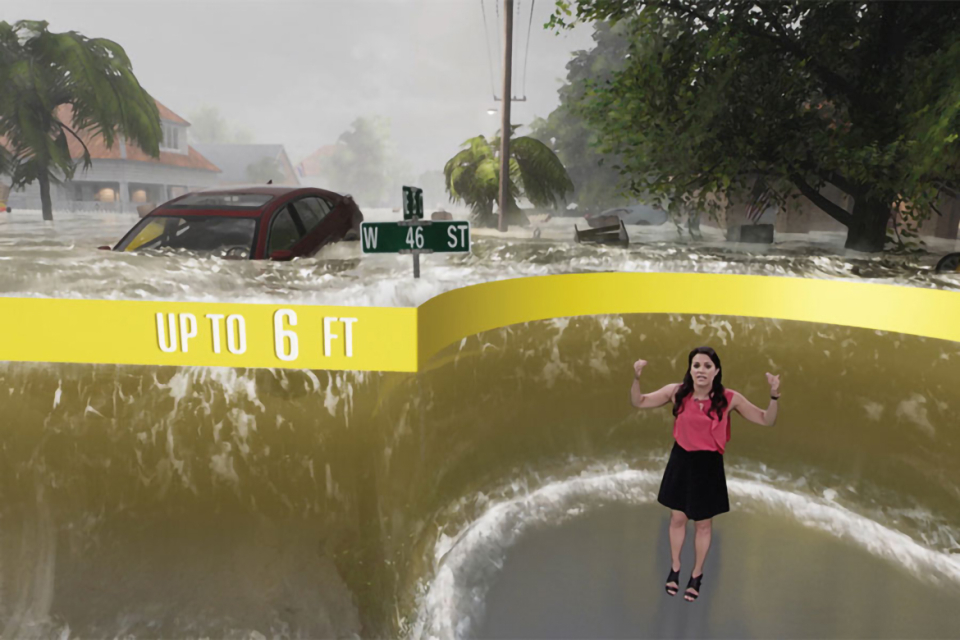Early in last year's coverage of hurricanes Florence and Michael, viewers of The Weather Channel saw meteorologist Erika Navarro surrounded in the studio by a very realistic depiction of deadly storm surge.
The harrowing simulation was courtesy of the network's new Immersive Mixed Reality (IMR) system.
"For a hurricane, we're talking about life-threatening storm surge. Being able to show somebody what this looks like is mind blowing," Navarro says. "Personally, I didn't know what a six-foot or a nine-foot storm surge really looked like, because I've never found myself in that scenario. But when you see it, it's very easy to understand why this is such a threat."
Prior to hurricane season, The Weather Channel tested IMR by depicting the dangers of lightning and tornadoes.
"We started using augmented reality in 2015, with a bunch of science explainers and weather explainers across the seasons," says Michael Potts, vice-president of design for The Weather Channel. "It wasn't until the early part of last year that the technology allowed us to visualize things in this hyper-realistic way."
That technology is The Future Group's Unreal Engine, which was originally used to render 360-degree high-definition virtual-reality environments for video games.
A team of roughly 30 experts from departments across The Weather Channel collaborated to plan, design and execute the new system.
"It was all hands on deck, and a big investment in our resources," Potts says. "We wanted to make a large impact very quickly." The system incorporates real-time data, so viewers can get a feel for what's happening at any moment. This winter, new IMR presentations are depicting the dangers presented by ice storms.
"I'm a scientist, not an actor, and I never imagined I'd be working in a full-on immersive green screen," says Navarro, who holds a PhD in atmospheric sciences and recently left the channel to return to academia. "But it's an incredibly useful tool. Having such a powerful visual that resonates with people is going to help get the message across during severe weather."
And resonate it does. The storm surge video had more than 22 million views on Facebook, Twitter and YouTube combined. Feedback on social platforms indicates the message got through. "People seemed to latch on to what we were saying," Navarro says. "I even had a few people say, 'If I'm ever in that situation, I won't stay,' which is wonderful. People are understanding why this is such a threat."
"We're saving lives with this effort," Potts says. "People are listening to the messages and their local officials, which is what we want them to do. But there's so much more to come with this. Our goal is to transform weather presentations. The explainers you've seen, and those that we're planning, are just the beginning."
This article originally appeared in emmy magazine, Issue No. 1, 2019











